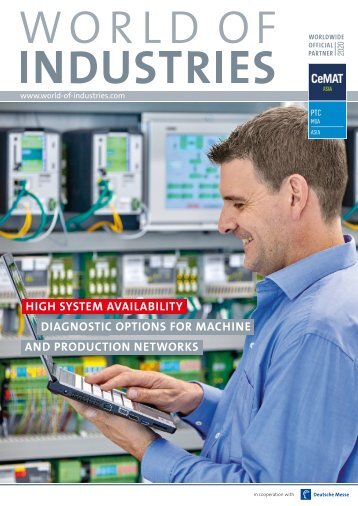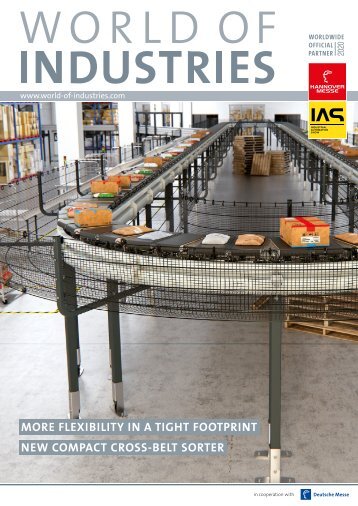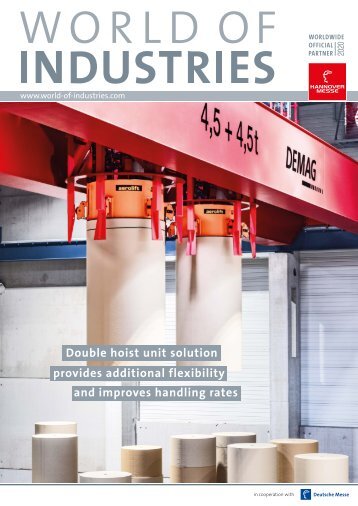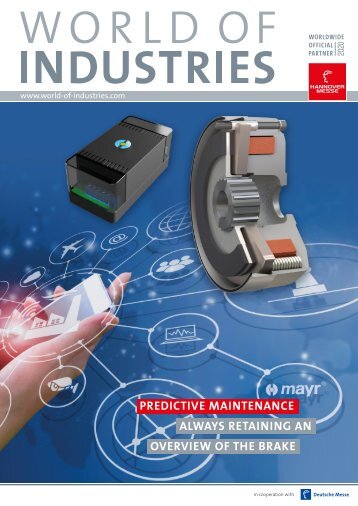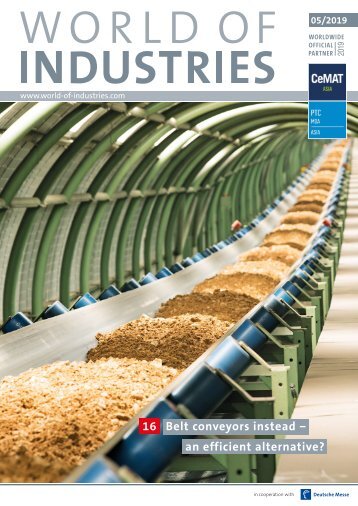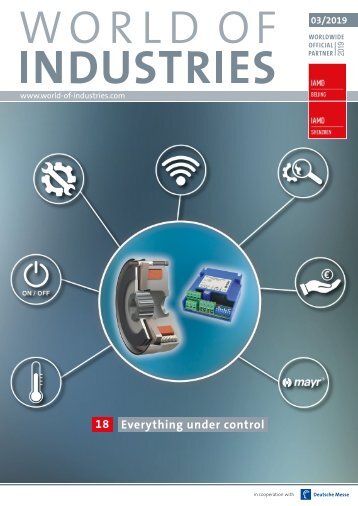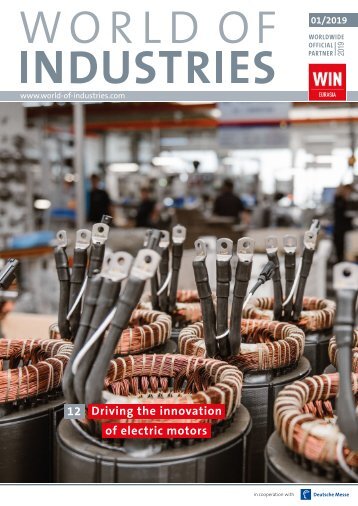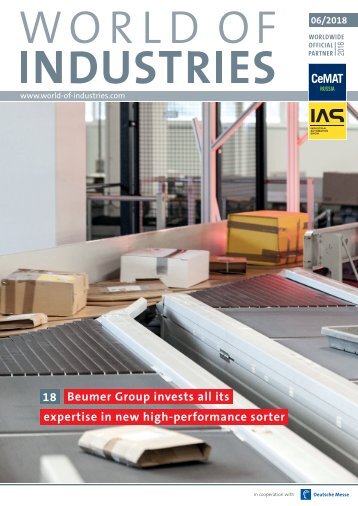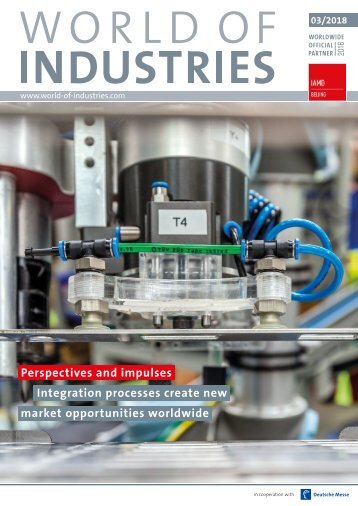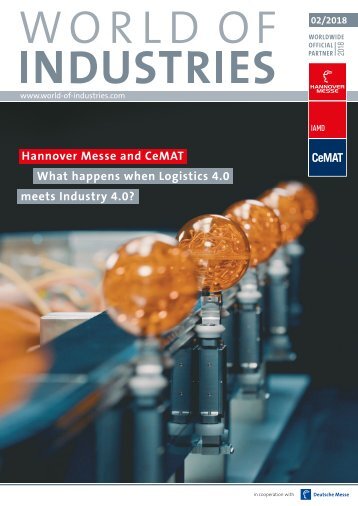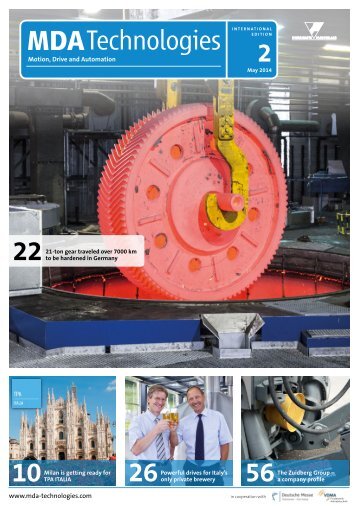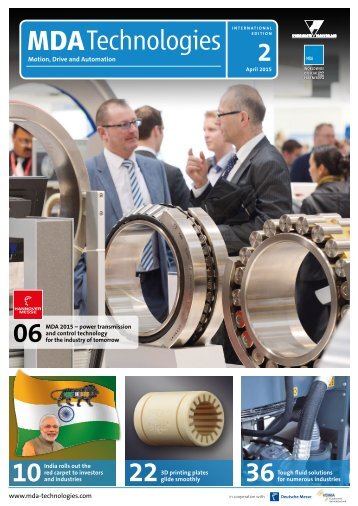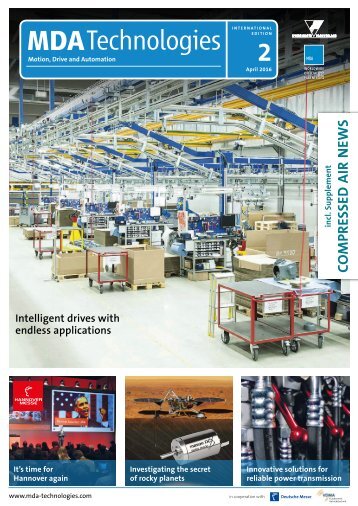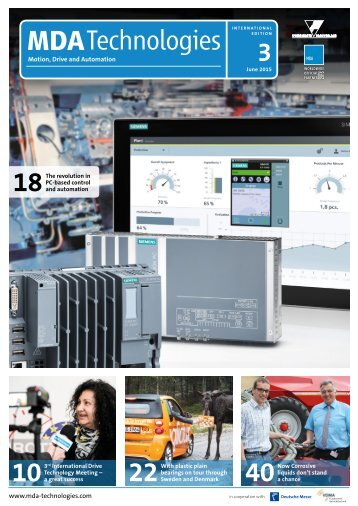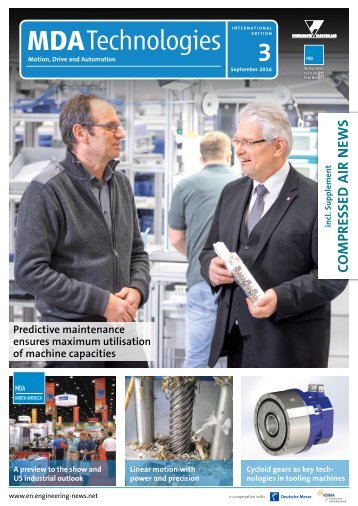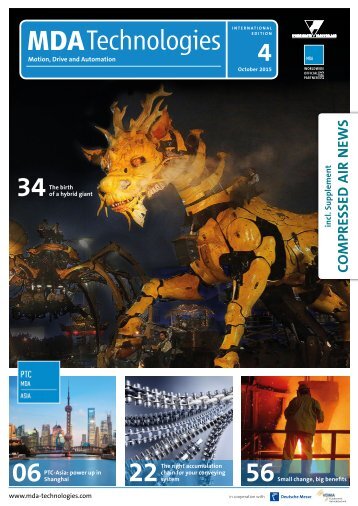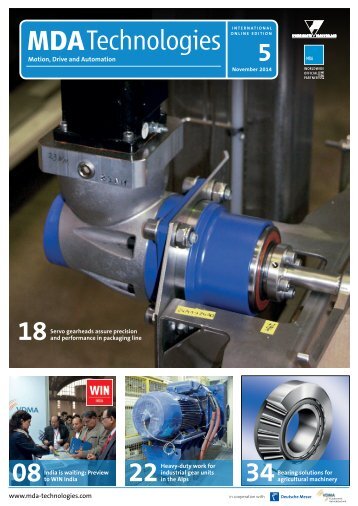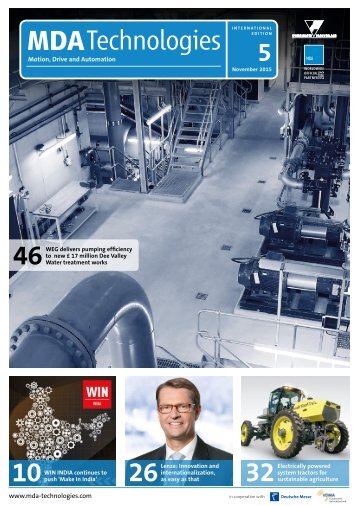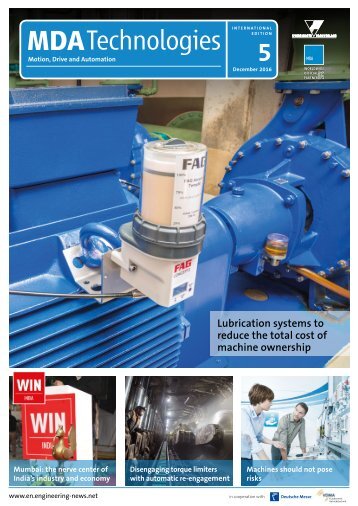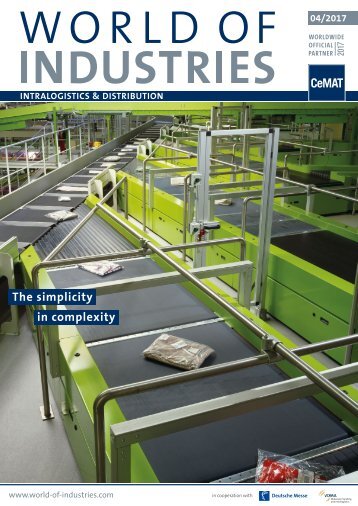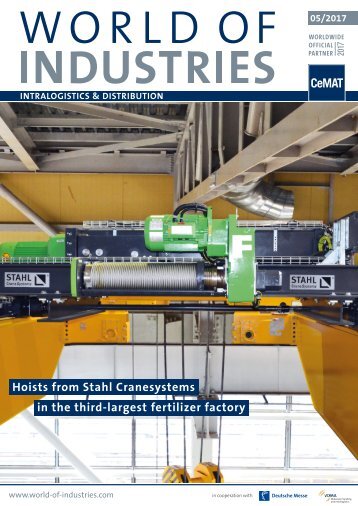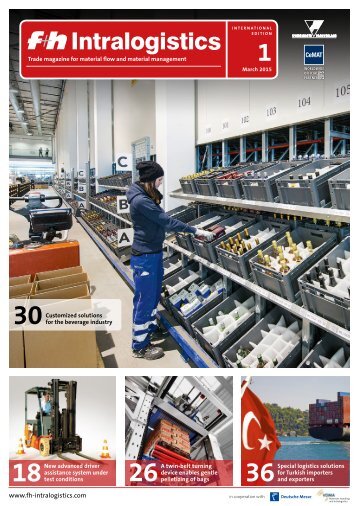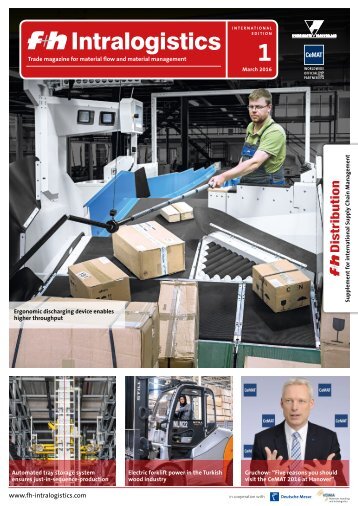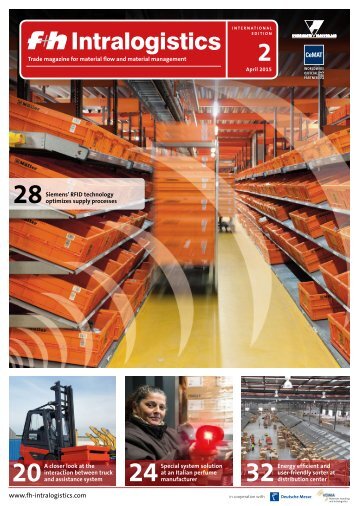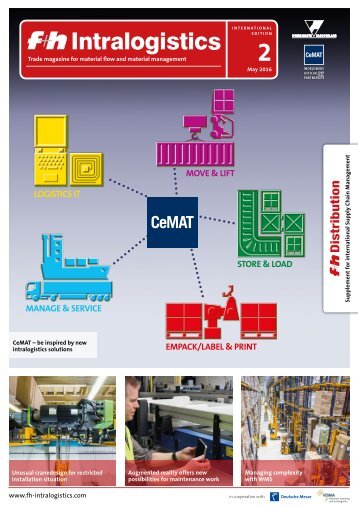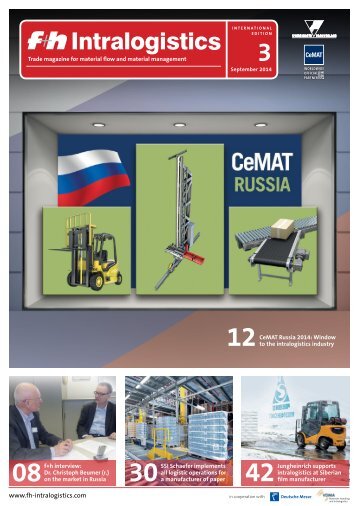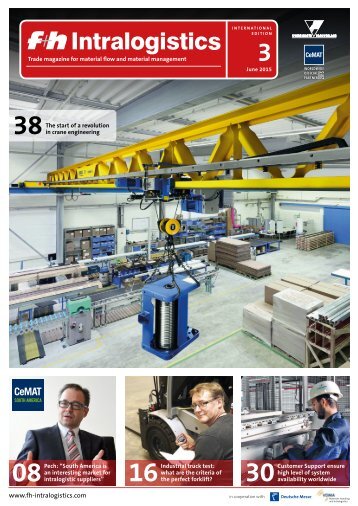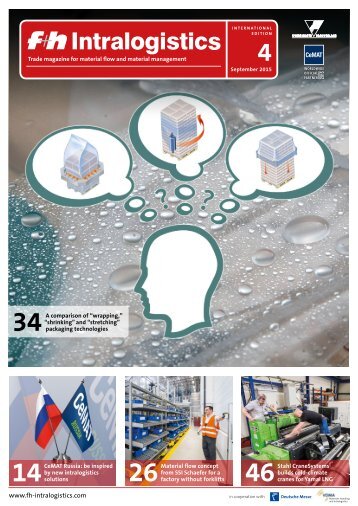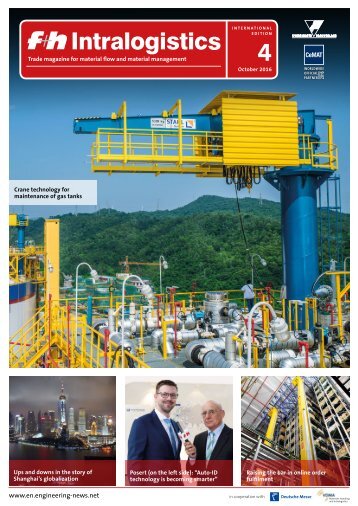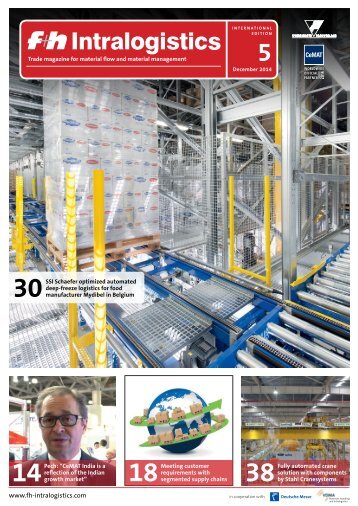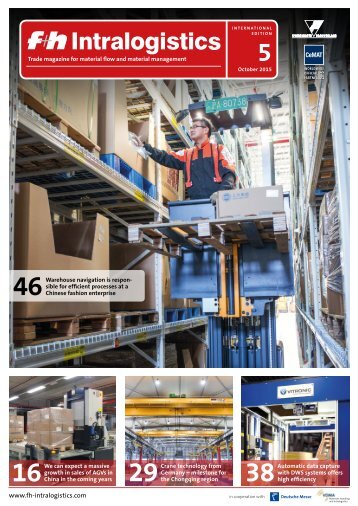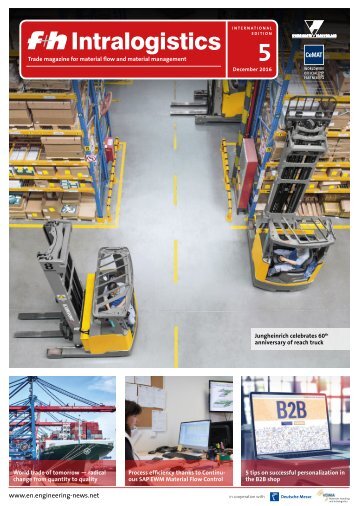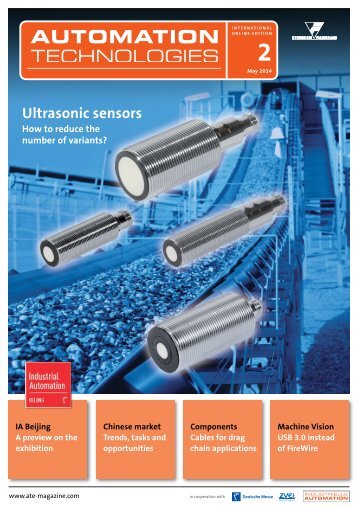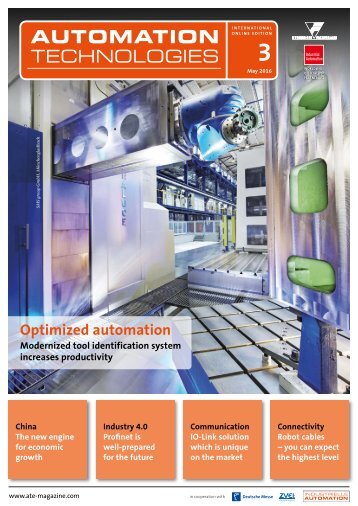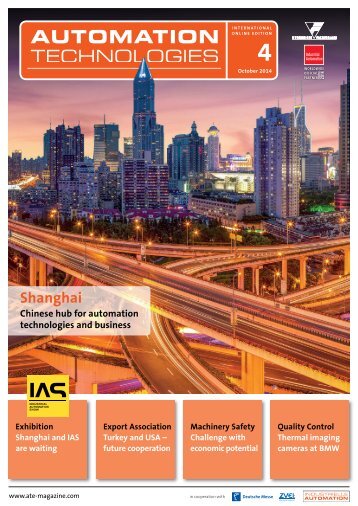WORLD OF INDUSTRIES 03/2019
- Text
- Industries
How TSN revolutionises
How TSN revolutionises the concept of time Time Sensitive Networking (TSN) has very quickly become a catchword in industrial automation. It represents a key technology for turning the Industrial Internet of Things (IIoT) into a reality by helping industrial Ethernet to guarantee reliable and time-predictable communications. The first step to achieve this is the creation of a synchronised system. AUTOMATION TSN was initially developed by the Institute of Electrical and Electronics Engineers (IEEE) as a series of open technical standards for audio video bridging (AVB) in professional audio-visual systems. The result is an ISO/OSI (International Organization for Standardization/Open Systems Interconnection) Data Link - Layer 2 technology regulated by IEEE 802.1 standards. By offering deterministic, real-time messaging, IEEE 802.1 quickly expanded its scope to other fields, particularly control networks within the automotive and manufacturing sectors, where it is essential to ensure that time-critical cyclic data is received within determined time intervals. Device synchronisation is the primary aspect of TSN In order to implement determinism with low bounded latency on industrial Ethernet networks, time synchronisation is a key aspect that needs to be addressed. In fact, this feature is necessary to maintain high precision for distributed systems, as it allows network devices to execute the required operations in unison, at the correct point in time and independently of where the actions should take place. In addition, when all components share a common concept of time, i.e. a universal clock, it is possible to perform accurate analysis to determine when an event happened on a specific machine, the time interval between two events that occurred on different components on the same network, or the relative ordering of events that took place on different devices. A unique clock system In order to implement network synchronisation, TSN establishes a unique clock system via a master-slave Precision Time Protocol (PTP), as specified by the IEEE 802.1AS approved standard on “Timing and Synchronisation for Time-Sensitive Applications” and IEEE 1588 - “Standard for a Precision Clock Synchronization Protocol for Networked Measurement and Control Systems”. According to these protocols, a network clock master, known as a “Grandmaster”, sends time information as Ethernet packets to each node, or “Time-Aware System”, within the network. Some types of time messages are used to communicate timerelated information that helps to to synchronise clocks across the network, or to measure delays across the communications medium in order to reduce their impact. In addition, additional functions are established to build a clock hierarchy and select the grandmaster as well as configure, monitor and maintain a PTP-based system. In this way, all the real-time clocks in the nodes can be synchronised to an accuracy of 1μs or less, which is also suitable for the most demanding motion control applications, whose cycle times may be as short as a few μs. In addition, if an error occurs, it is possible to check operation logs and trace chronologically and unambiguously what events caused the issue. As a result, operators can perform error identification and recovery tasks in a quicker and easier manner, slashing unplanned downtime and its associated costs. Conversely, there is no global clock or shared understanding of time in traditional Ethernet networks. In fact, each device has its About the CC-Link Partner Association (CLPA) The CLPA is an international organisation founded in 2000 dedicated to the technical development and promotion of the CC-Link family of open automation networks. The CLPA’s key technology is CC-Link IE, the world’s first and only open gigabit Ethernet for automation and an ideal solution for Industry 4.0 applications due to its unmatched bandwidth. Currently the CLPA has over 3,400 member companies worldwide. CC-Link is the leading open industrial automation network technology in Asia and is becoming increasingly popular in Europe and the Americas. 14 WORLD OF INDUSTRIES 3/2019
01 John Browett, General Manager of CLPA Europe, looks at how TSN creates synchronisation within a network and how this benefits industrial automation applications CC-Link IE TSN optimises the benefits already offered by CC-Link IE, the world’s first open gigabit industrial Ethernet, by improving communication functions and synchronization accuracy communication functions and synchronization accuracy. For example, this innovative solution can achieve cycle times as low as 31.25 μs whilst offering trouble-free handling of acyclic traffic due to its gigabit bandwidth. Therefore, it provides an optimum common communication channel for acyclic traffic and real-time control traffic, both of which will continue to increase as the fourth industrial revolution, Industry 4.0, becomes commonplace. By choosing this technology, manufacturers can boost their competitiveness with an increasingly popular open system that supports performance, connectivity and intelligence and within open industrial Ethernet networks. Photos: CLPA own internal clock, i.e. its own notion of time. Consequently, errors can accumulate over time, causing time drifts that take the processors out of synchronisation. https://eu.cc-link.org www.dmaeuropa.com More than synchronisation Reliable time synchronisation among all time-aware network devices provides the basis for all the other TSN key functions. In particular, IEEE 802.1AS provides a robust mechanism that supports IEEE 802.1Qbv - “Enhancements for Scheduled Traffic” standard. This defines how to efficiently schedule data traffic queues and prioritise the on-time delivery of time-critical frames. This process relies on time-aware shapers (TASs) that check each frame’s VLAN tag priority field and assign the message to a suitable priority queue, which is defined within a schedule. The transmission of data in each queue is executed during scheduled time windows, while the other queues are blocked from transmission. In this way, TAS ensures that cyclic messages are protected against interference from acyclic traffic, thus avoiding any delays or failures to deliver time-critical messages that can interrupt an application or even the entire production process. Even more, communication cycle times can be optimised, as different frames with similar priorities can be transmitted simultaneously. As a result, TASs and fixed traffic schedules overtake the traditional carriersense multiple access with collision detection (CSMA/CD) method, used by conventional Ethernet, that prevented determinism. Tel.: Tel.: +49 (0)4743/2769 27690 · · www.astro-motoren.de Zu Land, On land, im Wasser, at sea, under unterwater, Wasser, in in theder airLuft andund in space im Weltall - Small Elektrokleinmotoren electric motors according bis 200 Watt to customer nach Kundenwunsch requirements. A successful TSN implementation Fortschritt hat unser Tempo One of the leading and pioneering open industrial Ethernet network technologies that has recently implemented TSN is CC-Link IE TSN. This is a technology built around ISO/OSI Layers 3 to 7 that adopts the previously described IEEE 802.1AS and IEEE 802.1Qbv Layer 2 standards. CC-Link IE TSN optimises the benefits already offered by CC-Link IE, the world’s first open gigabit industrial Ethernet, by improving Unsere modularen Elektro-Kleinmotoren und Getriebe ASTRO bauen Motoren wir GmbH in Millionen & Co. KG Debstedt · Große Beek 7 · 27607 Geestland Kombinationen – passgenau zu den AnforderungenTel.: jedes (0)47 43 Kunden. / 27 69 · astro@astro-motoren.de 2017 Debstedt · Große Beek 7 · D-27607 Geestland · Germany Tel.: +49 (0) 4743 27690 · astro@astro-motoren.de www.astro-motoren.de WORLD OF OF INDUSTRIES 3/2019 15 ASTRO.indd 1 25.03.2019 13:05:23
- Page 1 and 2: 03/2019 www.world-of-industries.com
- Page 3 and 4: EDITORIAL Digital Developments Dear
- Page 5 and 6: W RLDWIDE NEWS Bosch Rexroth invest
- Page 7 and 8: Apart from trade wars, manufacturin
- Page 9 and 10: nover Messe’s global chain of ind
- Page 11 and 12: machine and component manufacturers
- Page 13: 01 Blue Offshore are experts in lay
- Page 17 and 18: MSR175 data loggers record physical
- Page 19 and 20: 01 The intelligent ROBA-brake-check
- Page 21 and 22: n Acoustics: Often loud environment
- Page 23 and 24: 02 The benefits of the new electrom
- Page 25 and 26: The interview with Axel Reichert (c
- Page 27 and 28: CHANGING TIMES Automation market -
Inappropriate
Loading...
Mail this publication
Loading...
Embed
Loading...

